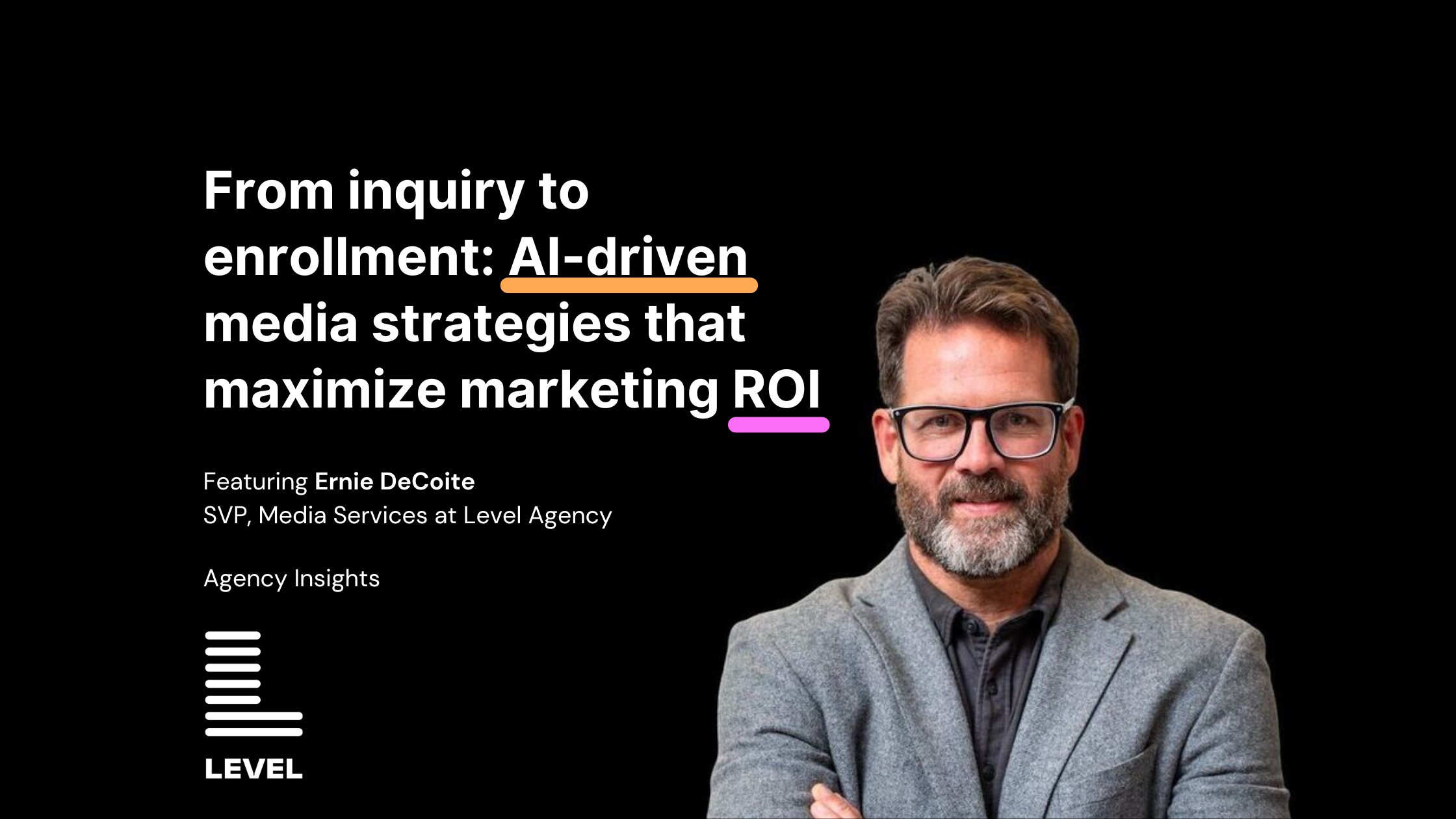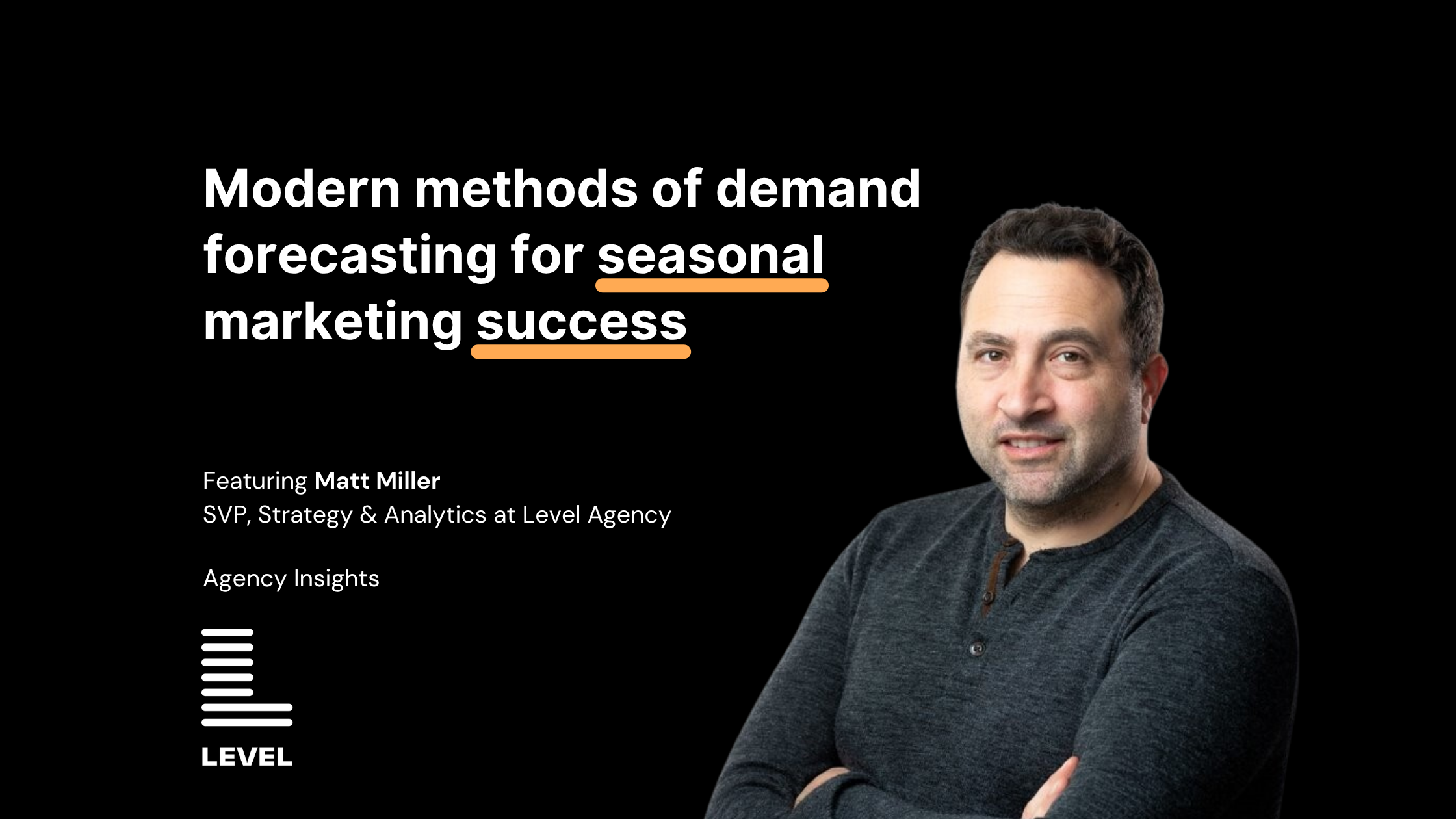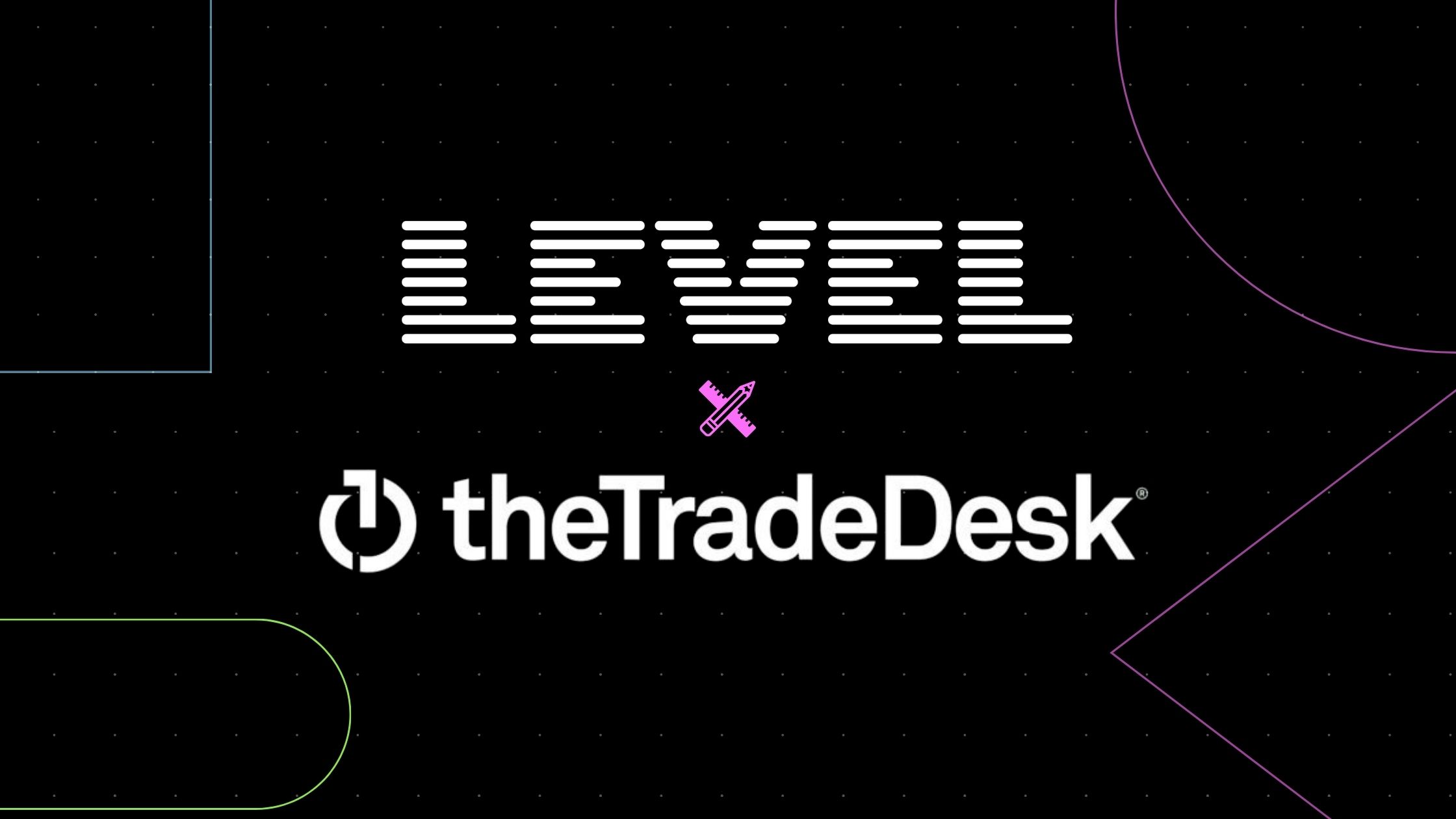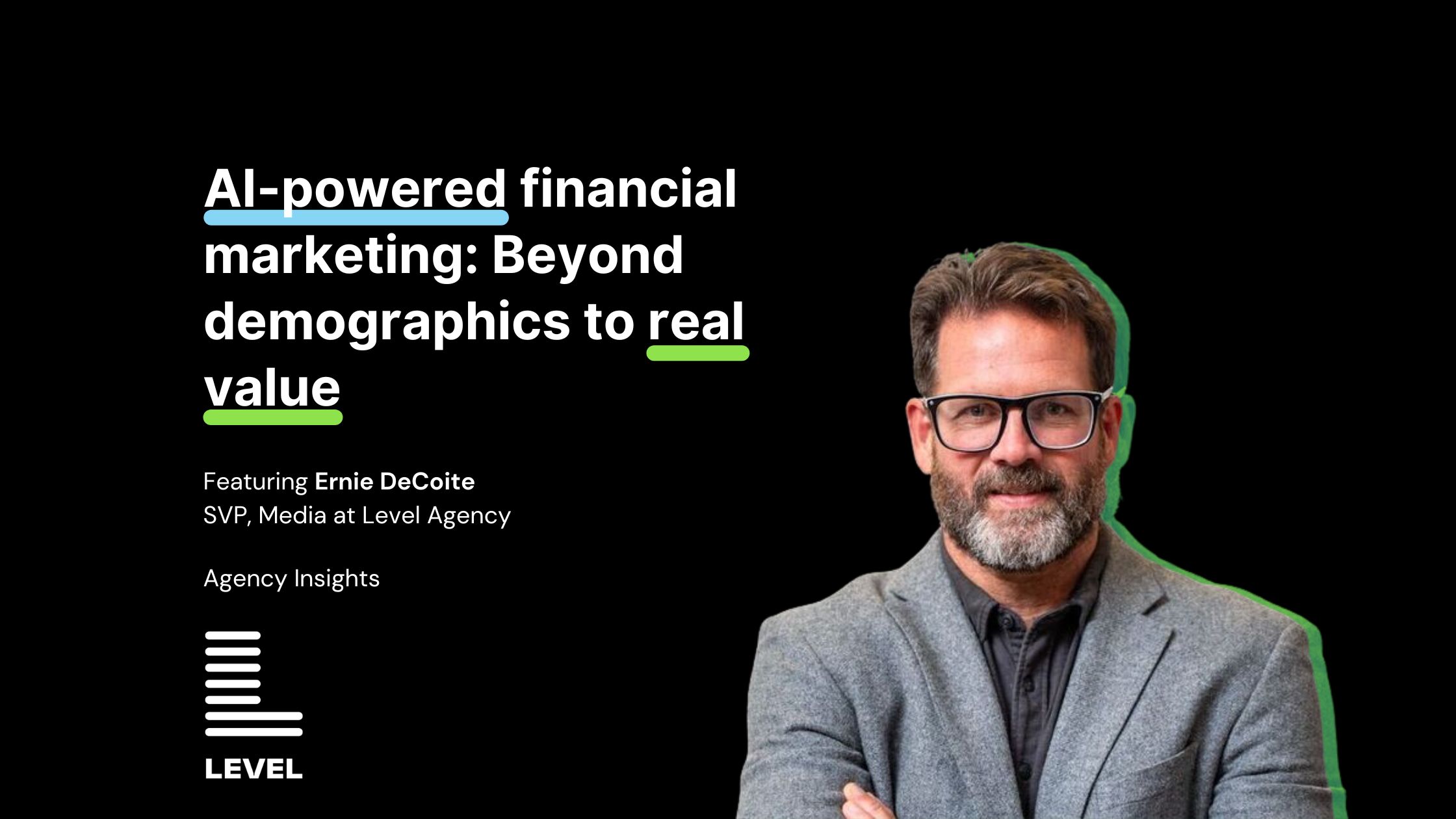From inquiry to enrollment, the student journey has never been more complex. An AI-driven media strategy is now central to higher education marketing, helping institutions reach the right students with more precision and impact. These strategies also power predictive enrollment efforts, aligning media investment with real enrollment outcomes.
To explore this transformation, we sat down with Ernie Decoite, SVP of Media Services at Level Agency. In this conversation, Ernie breaks down what it really takes to build effective AI-driven media strategies, where most institutions are falling short, and what schools can do now to stay relevant and effective. His perspective cuts through the hype and gets into what matters: strategy, structure, and using data that works.

What is an AI-driven media strategy in higher education marketing?
At Level Agency, we don’t view AI as a strategy unto itself. Rather, it’s a set of practical tools that enhance our existing media strategies for higher education institutions. From refining creative to smarter audience targeting and campaign structure, AI is involved in nearly every layer of what we do.
Take media platforms, for instance. They’ve become AI-first environments. That shifts how we approach campaign builds. Gone are the days of hyper-granular bid management. Today, we treat ad account structure as prompt engineering. Each campaign is a directive to the platform’s AI: “Find more students like this.”
We also use AI to scale creative testing, speed up market research, and, most importantly, improve performance by feeding platforms better data. AI doesn’t replace strategy, it sharpens it. When used well, it helps us do better work, faster.
How does an AI-driven media strategy support the full student journey?
The student journey is increasingly AI-powered, on both sides of the interaction. Prospective students are now AI natives. Just as millennials were internet-first, this next generation is AI-first. Their school search often begins with a prompt, not a Google search, that changes the game.
You need to ensure your institution’s content is optimized for search engines AND AI engines. Are your program pages and site structure ready to be summarized, recommended, or surfaced by generative tools like ChatGPT? That’s part of a broader need for making sure your content shows up where today’s students are searching.
And on the institutional side, we use AI throughout the funnel:
- Top of Funnel: AI helps us identify new audiences and test creative variants quickly.
- Mid Funnel: We use AI to personalize messaging and deploy models that estimate lead quality.
- Bottom of Funnel: AI-driven outreach tools help admissions teams follow up consistently, without losing the human element.
AI now plays a role at every touchpoint, helping us deliver campaigns that are faster, more relevant, and more student-centered.
How do we adapt AI-driven media strategies for modern ad platforms?
Platforms like Google and Meta are increasingly driven by AI, and that means traditional tactics like keyword-based targeting or strict demographic segmentation are not the only consideration. What matters just as much now is signal quality. You can’t control who sees your ads as precisely as before, but you can influence what the algorithm learns from your data.
Our biggest lever? First-party data and predictive models. We take real enrollment outcomes, not just form fills, and feed them back into the platforms. We use hashed PII, click IDs, or modeled values to give algorithms a clearer picture of what a strong lead looks like. That’s how we make AI work for us. Instead of chasing volume, we’re shaping outcomes.
What should schools focus on in paid vs. organic AI optimization?
In a world where platform capabilities evolve almost weekly, it’s easy to lose sight of the fundamentals. But when it comes to maximizing your AI-driven strategy, clarity still wins. Let’s break it down:
Paid: A full-funnel approach still matters. Students rarely enroll outside of their initial consideration set. AI can help optimize each stage, but only if your campaign structures are AI-friendly, your goals are clear, and you’re feeding the right conversion signals back into the system.
Organic: This is the less obvious, but increasingly important frontier. You need content that AI can interpret, cite, and elevate, whether that’s FAQs, structured data, or program descriptions. Your school has to show up in ways traditional SEO never accounted for.
Paid and organic efforts must now align not just with users, but with the way AI sees your content and intent.
How do we build better signals using first-party data?
The answer lies in building smarter predictability into your enrollment strategy. At Level Agency, we build predictive models that assess each lead’s likelihood to enroll, turning behavioral and demographic signals into actionable insights. These models factor in:
- On-site behavior
- Historical data on leads and enrollments
- Demographic and psychographic inputs at the point of capture
By activating these scores within ad platforms, we help algorithms prioritize the right prospects, those with timing, intent, and fit. We’ve seen this strategy turn campaigns from lead-gen engines into true enrollment engines. It’s not about more leads. It’s about more of the right ones.
What happens when we apply value-based bidding?
One example: Ancora Education. When we applied value-based bidding models, we expected lower volume but better enrollment efficiency. What we got was both higher lead volume and stronger conversion rates.
It wasn’t a fluke. We’ve seen the same results with Columbia Southern University, American Career College, and others. When platforms know what “good” looks like—meaning leads with a high likelihood to enroll based on modeled attributes, behaviors, and outcomes—they find more of it, fast. Good, in this context, isn’t about form fills; it’s about downstream impact: applicants who progress, enroll, and ultimately succeed.
This proves that value-based bidding isn’t just a tactical shift—it’s a strategic lever for enrollment growth. When combined with predictive scoring and strong signal feedback loops, it empowers platforms to prioritize not just any leads, but the right ones.
How does AI differentiate brands in a competitive market?
Creative is where you stand out—or blend in. AI gives us new ways to analyze what works at scale. We use video intelligence tools to assess ad performance based on:
- Visual elements (like smiling faces or outdoor scenes)
- Use of text overlays or brand elements
- Tone, voice, and pacing
These insights help us test faster, double down on what’s working, and cut what isn’t. It means fewer guesses and more wins.
The result? Campaigns that perform better and reflect what makes your brand unique.
Where do humans still matter?
The AI takeover is real, but incomplete.
Media buyers are now orchestrators. We architect campaigns and guide AI with the right inputs, goals, and guardrails. Think of us as the conductor, with AI playing the instruments.
And on the admissions side? While AI can send texts or answer questions, it can’t replace human empathy. For now, getting a student on the phone with someone who can truly understand their goals is still one of the most powerful parts of the journey. The best outcomes happen when humans and machines each play to their strengths.
How can schools get started with an AI-driven strategy?
To begin making real progress with an AI-driven media strategy in higher education marketing, there are two foundational questions every institution should ask. First, are your ad accounts structured in a way that aligns with how modern AI systems work? That means consolidated campaigns, clearly defined conversion goals, and a consistent flow of strong performance signals.
Second, are you putting your first-party data to work? Whether through hashed uploads, predictive lead scoring, or conversion value rules, activating differentiated signals is what separates basic automation from predictive enrollment performance.
Schools that get these two elements right are already seeing better outcomes. They’re optimizing not just for volume, but for meaningful enrollment. And if you’re unsure where to begin, partnering with a team fluent in both AI technology and EDU strategy can dramatically speed up your progress.









